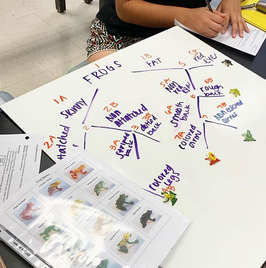
When you were a kid did you ever read the “choose your own ending” books? You would read and then it would give you two scenarios and you could choose how you wanted the story to continue? I always liken those to dichotomous keys when introducing them to students. You get two scenarios, choose one, and follow where it tells you to go.
Why do we use dichotomous keys? They are an identification and classification tool. If you are looking at a plant in your backyard and want to identify it and it’s scientific name, we use a dichotomous key.
Dichotomous keys are fun for students and they get the hang of them quickly.
1. I begin by using a powerpoint that teaches students how dichotomous keys work. You can find it here.
2. Ready to practice? Here is a mollusk activity from Cornell.

3. This fun activity from Carolina Biological uses a flower dissection and dichotomous key to help solve a crime.
4. Generally we use dichotomous keys in biology, but they can be used for other things too! Here is a cloud identification dichotomous key from NASA.
5. Here is an interactive fish identification dichotomous key that is fully virtual! Perfect if your students have computer access.

6. Ready to have students build their own? Head to your local dollar store and grab an assorted bag of animals (I found frogs when I looked). Have students lay them out on a whiteboard, sort them into two categories as they go, and create a dichotomous key. Using whiteboards allows them to correct any mistakes.

If you have any other fun ways to teach dichotomous keys, leave me a comment! You might also want to check out this blog post that has resources for teaching cladograms.